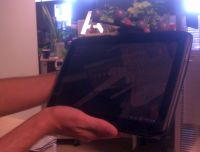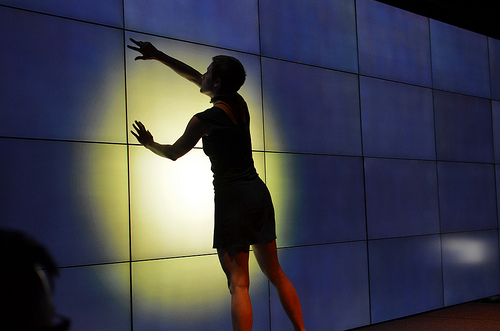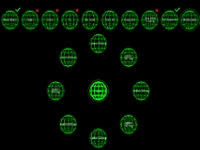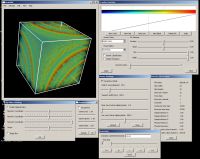Difference between revisions of "Projects"
From Immersive Visualization Lab Wiki
(→Active Projects) |
(→Active Projects) |
||
| Line 80: | Line 80: | ||
<td>[[Image:TD_performance.jpg]]</td> | <td>[[Image:TD_performance.jpg]]</td> | ||
<td>This project allows artists without programming background to render images with CalVR, essentially allowing them to express their artworks and creativity in a much larger scale. [http://vimeo.com/46401959 See the project in action], and [http://www.youtube.com/watch?v=_V3eq3bOjxA a more recent performance with it (starts at 14:00 min)].</td> | <td>This project allows artists without programming background to render images with CalVR, essentially allowing them to express their artworks and creativity in a much larger scale. [http://vimeo.com/46401959 See the project in action], and [http://www.youtube.com/watch?v=_V3eq3bOjxA a more recent performance with it (starts at 14:00 min)].</td> | ||
| − | |||
| − | |||
| − | |||
| − | |||
| − | |||
| − | |||
| − | |||
| − | |||
| − | |||
| − | |||
| − | |||
| − | |||
| − | |||
| − | |||
| − | |||
| − | |||
| − | |||
| − | |||
| − | |||
| − | |||
| − | |||
| − | |||
| − | |||
| − | |||
| − | |||
| − | |||
| − | |||
| − | |||
| − | |||
| − | |||
| − | |||
| − | |||
| − | |||
| − | |||
| − | |||
| − | |||
| − | |||
| − | |||
| − | |||
| − | |||
| − | |||
| − | |||
| − | |||
| − | |||
| − | |||
| − | |||
| − | |||
| − | |||
| − | |||
| − | |||
| − | |||
| − | |||
| − | |||
| − | |||
| − | |||
| − | |||
| − | |||
| − | |||
| − | |||
| − | |||
| − | |||
| − | |||
| − | |||
</tr> | </tr> | ||
</table> | </table> | ||
Revision as of 17:46, 1 May 2013
Past Projects
Active Projects
Android Head Tracking (Ken Dang, 2013)
 |
The Project Goal is to create a Android App that would use face detection algorithms to allows head tracking on mobile devices |
Camelot (Thomas Gray, 2013)
 |
The goal of this project is to create a multi-camera video capture system. |
ZSculpt - 3D Sculpting with the zSpace (Thinh Nguyen, 2013)
 |
The goal of this project is to explore the use of the zSpace VR system for 3D sculpting. |
Magic Lens (Tony Chan, Michael Chao, 2013)
 |
The goal of this project is to research the use of smart phones in a virtual reality environment. |
Pose Estimation for a Mobile Device (Kuen-Han Lin, 2013)
 |
The goal of this project is to develop an algorithm which runs on a PC to estimate the pose of a mobile Android device, linked via wifi. |
AndroidAR (Kristian Hansen, Mads Pedersen, 2012)
 |
Tracked Android phones are used to view 3D models and to draw in 3D. |
ArtifactVis with Android Device (Sahar Aseeri, 2012)
 |
In this project, an Android device is used to control the ArtifactVis application and to view images of the artifacts on the mobile device. |
Bubble Menu (Cathy Hughes, 2012-)
Multi-User Graphics with Interactive Control (MUGIC) (Philip Weber, Nadia Zeng, Andy Muehlhausen, 2012-)
 |
This project allows artists without programming background to render images with CalVR, essentially allowing them to express their artworks and creativity in a much larger scale. See the project in action, and a more recent performance with it (starts at 14:00 min). |

